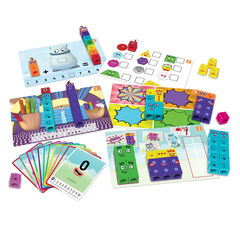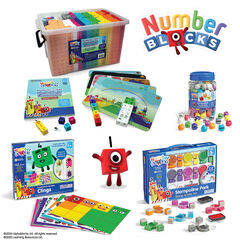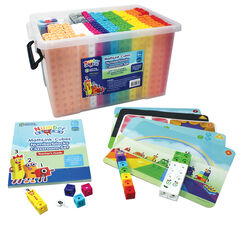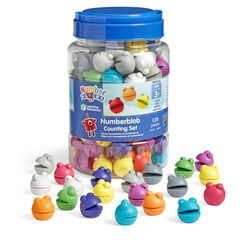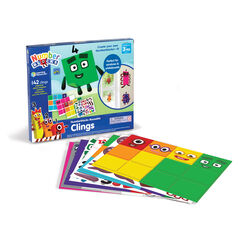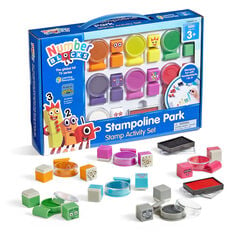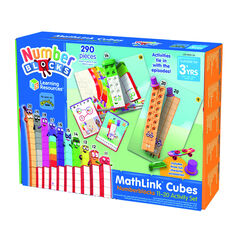Numberblocks not only engage children with their on-screen magic but can bring maths to life with hands on exploration through play. Why not take children on mathematical adventures alongside their favourite characters, helping them to master key maths skills whilst having fun with numbers using these Numberblocks tuff tray ideas.
Here are 5 simple but effective maths tuff tray ideas that can be created using our fun-loving friends and other resources:
Sorting with Numberblobs
From a young age, many children love to sort objects into groups. They learn to recognise similarities and differences and gain an awareness that objects can be sorted according to their properties.
- Sort the Numberblobs Counters in different ways such as colour, shapes (on the bottom of the Numberblobs), open/closed mouths or any other ways you can think of.
- Compare the groups by asking questions such as ‘Which group has more? Less?’ or ‘How many are in each group?’
- Develop motor skills along the way by using a range of tweezers or utensils to find and gather the Numberblob Counters from materials such as sand, water, jelly or foam.
Becoming Pattern Detectives
Patterns help children to make predictions, understand what comes next and to make logical connections. Encourage children to be pattern detectives by providing them with a range of patterns to recognise, create and describe.

- Order, sequence and build patterns using a range of resources, such as the Numberblocks Stampoline Park Stamp Activity Set, Numberblocks Reusable Clings, or by stamping shape sequences into playdough using the Numberblobs Counters.
- Use the Numberblocks MathLink Cubes and Numberblob Counters to create shape or colour patterns. Can the children create the same pattern and represent it in multiple ways using a range of resources? How are they the same/different?
- Start by copying simple patterns before moving on to creating repeating patterns, identifying errors or predicting what will come next and continuing the sequence.
- Take learning into the environment by going on a pattern spotting adventure. How many can they find?
Five and Friends- Fiveness of 5
Develop children’s understanding of conservation of number (the quantity a number represents is the same, no matter the configuration) using a range of resources including favourite characters from the much-loved Numberblocks.
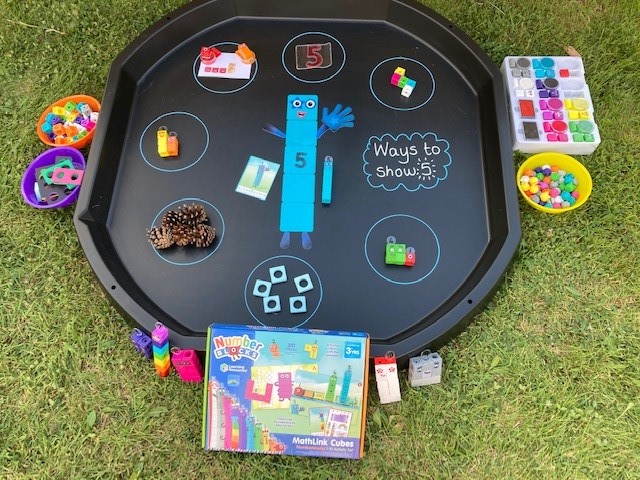
- Introduce number five. In your tuff tray, set up different ways the number can be made for the children to explore. Use a variety of objects such as Numberblocks MathsLink Cubes, Numberblob Counters, number frames and real-life objects.
- Explore number bonds using the different characters for example, which can be used to make Five?
- Use storytelling to introduce simple calculations such as addition and subtraction facts.
- Take the learning beyond the tuff tray by encouraging children to find different examples of 5 elsewhere in your environment. Look at the objects that make up the five. What do you notice?
Count it, Build it, Write it
From the skill of 1-1 correspondence to different visual and written representations, get children thinking about and playing with numbers in different ways.
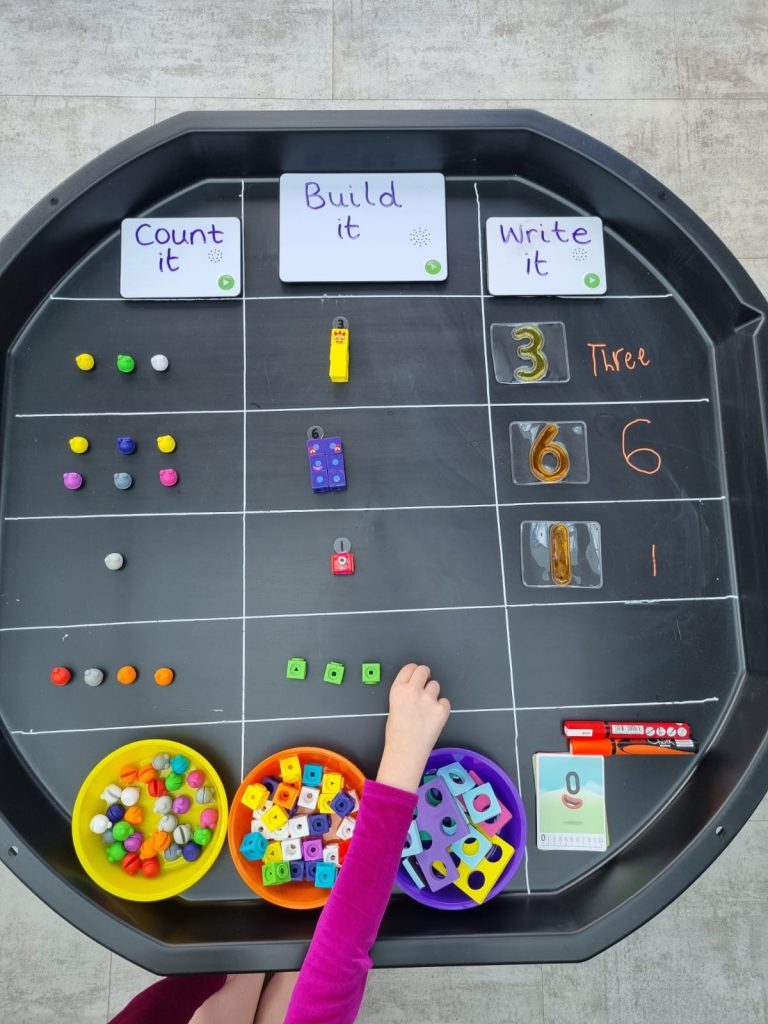
- Create the tuff tray with spaces in each of the columns for the children to fill in. For example, you may have the numeral 6 and children represent the number using Numberblobs Counters and Numberblocks MathsLink cubes.
- When children are ready, move on from counting to subitising (recognising the number of objects without needing to count).
- Challenge children to use different resources to represent the numbers, for example cars, number frames or even sticks or stones from the outdoor area.
- Investigate the different ways to record or a write a number. Why not experiment with tally marks, dots, numerals, or the number name?
Adventures with the Numberblocks
Bring the stories from the Numberblock episodes to your setting by creating small world scenarios that encourage mathematical learning through play.
- Design Numberland with the children. Build the characters using the Numberblocks MathsLink Cubes and challenge them to find corresponding amounts to go in the different areas of the tuff tray.
- What adventures await the Numberblocks characters and Numberblobs? Can Numberblock One find 1 egg and 1 nest for it to sit in? What other things can they find to represent the number?
- Watch episodes of the Numberblocks together. Recreate scenes from the stories and retell them using the characters. Encourage the use of mathematical language whilst children are transported to the land of numbers.
Building on from these 5 tuff tray ideas, why not challenge children to take the Numberblocks on adventures in different areas of your provision?
Let the fun begin!







